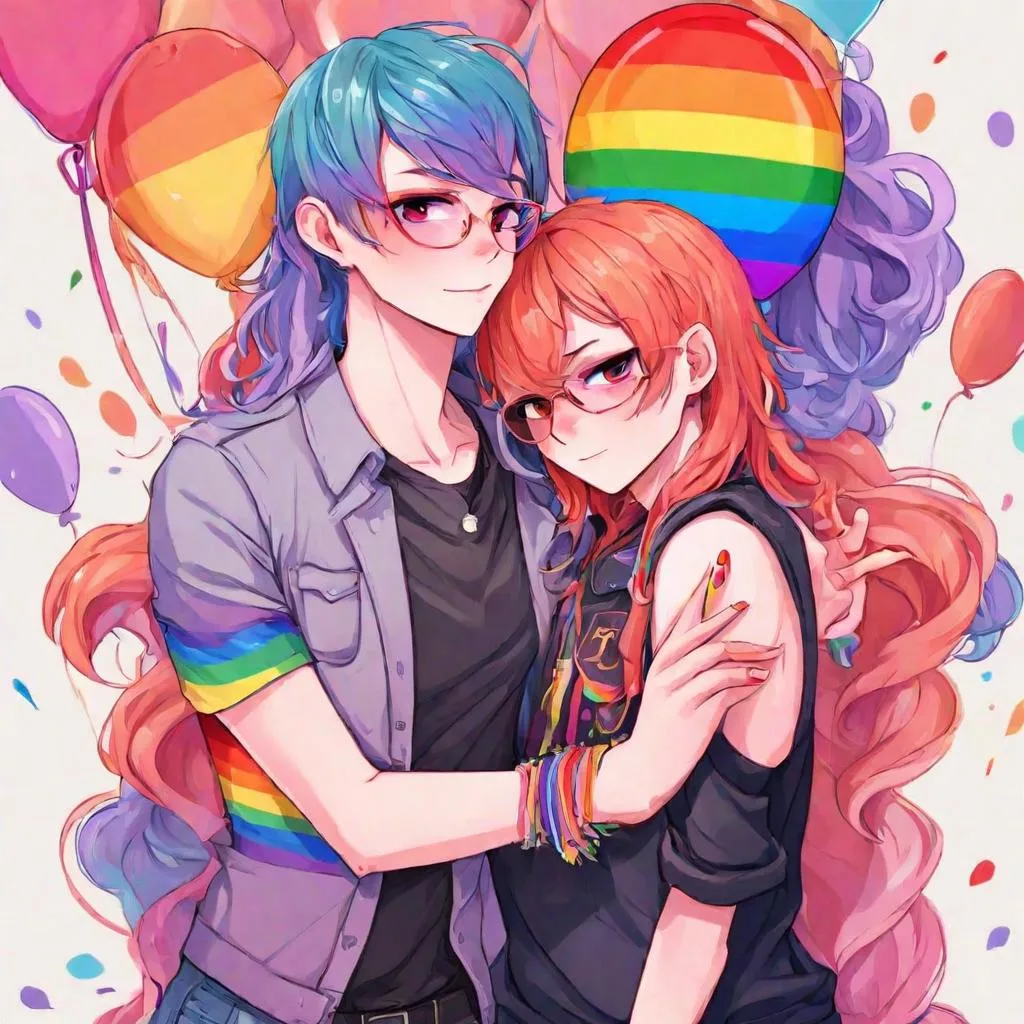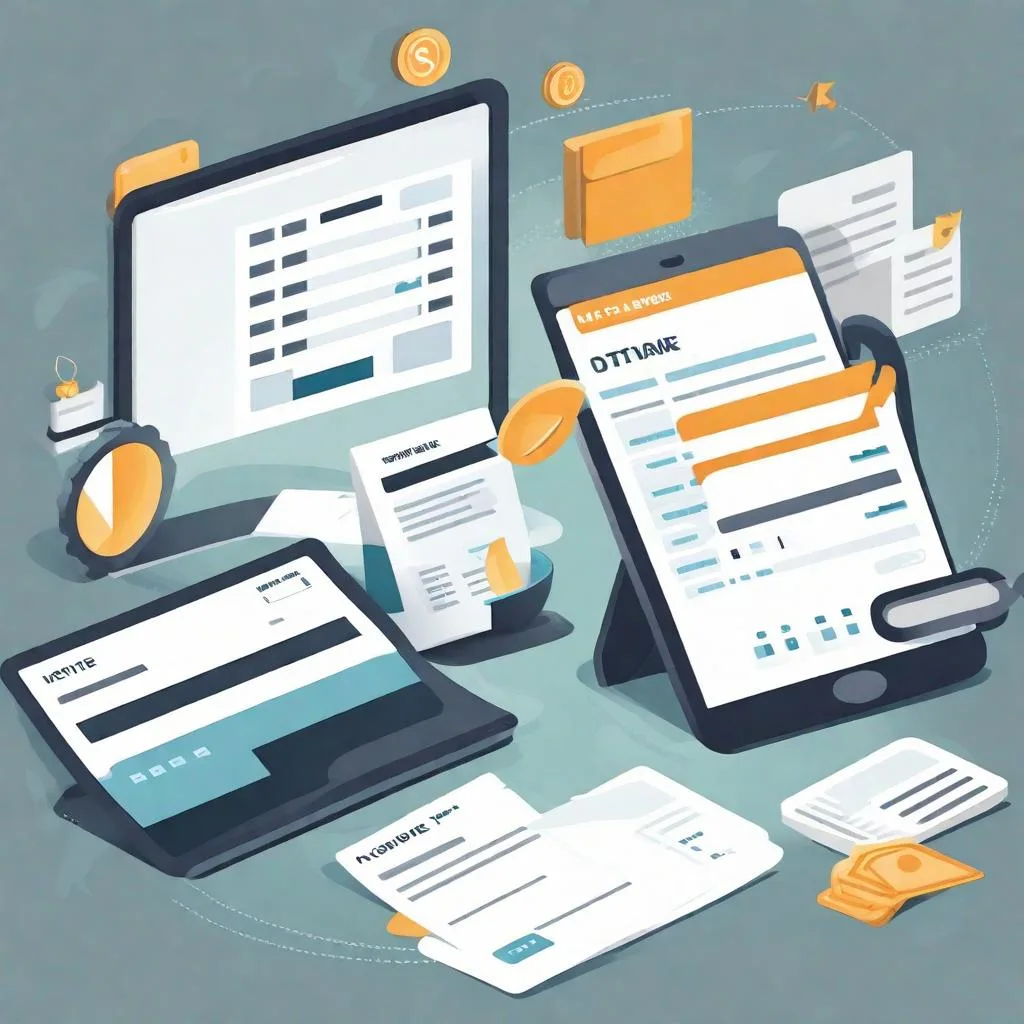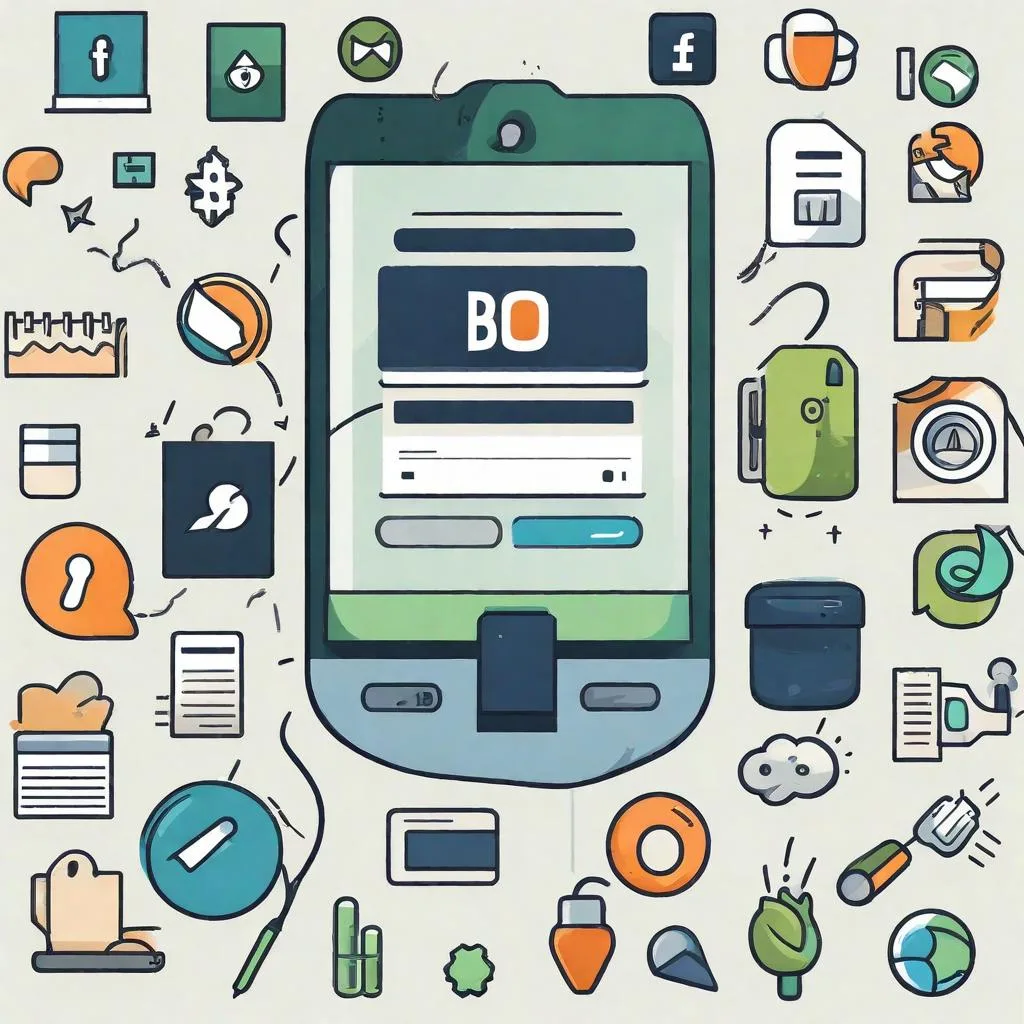All the information on this website is published in good faith and for general information purpose only. blog.medihertz.com does not make any warranties about the completeness, reliability and accuracy of this information.Read Our Disclaimer
-
Table of Contents
- Introduction
- Understanding the Basics: What Is an LGBT Person?
- The History and Evolution of the LGBT Community
- Breaking Stereotypes: Debunking Myths About LGBT Individuals
- The Importance of LGBTQ+ Representation in Media and Society
- Exploring the Different Identities Within the LGBT Community
- The Challenges Faced by LGBT Individuals and How to Support Them
- What Does Queer Mean in the Context of LGBT?
- The Significance of Pride Month: Celebrating the LGBT Community
- Conclusion
Introduction
An LGBT person refers to an individual who identifies as lesbian, gay, bisexual, or transgender. The term “queer” is an umbrella term within the LGBT community that encompasses a wide range of sexual orientations and gender identities that do not conform to traditional societal norms. It is used by some individuals as a self-identifier to express their non-heterosexual or non-cisgender identities.
Also Read- What Does LGBTIQ Stand For and What Does + Mean in LGBTIQ+
Understanding the Basics: What Is an LGBT Person?
What Is An LGBT Person? What Does Queer Mean In LGBT?
In today’s society, it is crucial to have a comprehensive understanding of the diverse range of identities and orientations that exist. One such group that has gained significant visibility and recognition in recent years is the LGBT community. LGBT stands for lesbian, gay, bisexual, and transgender, and it encompasses a broad spectrum of individuals who identify with these orientations or gender identities.
To truly grasp the concept of an LGBT person, it is essential to recognize that sexual orientation and gender identity are distinct aspects of a person’s identity. Sexual orientation refers to an individual’s emotional, romantic, or sexual attraction to others. On the other hand, gender identity refers to a person’s deeply held sense of being male, female, or something else entirely, which may or may not align with the sex assigned at birth.
Within the LGBT community, there are various identities and orientations that individuals may identify with. For instance, a lesbian is a woman who is emotionally, romantically, or sexually attracted to other women. Similarly, a gay man is a male who is attracted to other males. Bisexual individuals are those who are attracted to both males and females, while transgender individuals have a gender identity that differs from the sex assigned to them at birth.
However, it is important to note that the LGBT community is not limited to these four categories. The term “queer” is often used as an umbrella term to encompass all individuals who do not identify as heterosexual or cisgender. Queer is an inclusive term that recognizes and celebrates the diversity within the LGBT community. It is a way for individuals to express their non-normative sexual orientations or gender identities without having to conform to specific labels.
The term “queer” has evolved over time and has been reclaimed by the LGBT community as a positive and empowering term. It is a way for individuals to embrace their uniqueness and challenge societal norms and expectations. However, it is important to note that not everyone within the LGBT community identifies with the term “queer.” Some individuals may find it offensive or prefer to use more specific labels to describe their identities.
Understanding the basics of what it means to be an LGBT person is crucial for fostering inclusivity and acceptance in society. It is essential to recognize that sexual orientation and gender identity are innate aspects of a person’s identity and should be respected and celebrated. By educating ourselves about the diverse range of identities and orientations within the LGBT community, we can create a more inclusive and understanding society.
In conclusion, an LGBT person refers to an individual who identifies as lesbian, gay, bisexual, or transgender. These identities encompass a broad spectrum of sexual orientations and gender identities. The term “queer” is often used as an inclusive umbrella term to encompass all individuals who do not identify as heterosexual or cisgender. It is a way for individuals to express their non-normative identities and challenge societal norms. However, it is important to respect individual preferences and not assume that everyone within the LGBT community identifies with the term “queer.” By understanding and embracing the diversity within the LGBT community, we can work towards creating a more inclusive and accepting society for all.
Also Read- For Which Individual Living in the United States Would a Car most likely be a Luxury Item?
The History and Evolution of the LGBT Community
The LGBT community has a rich and complex history that spans centuries. From the shadows of secrecy to the forefront of social and political movements, the journey of the LGBT community has been one of resilience and progress. Understanding the history and evolution of this community is crucial in order to appreciate the struggles and triumphs that have shaped the lives of LGBT individuals.
The term LGBT stands for lesbian, gay, bisexual, and transgender. It is an umbrella term that encompasses a diverse range of sexual orientations and gender identities. The history of the LGBT community can be traced back to ancient civilizations, where same-sex relationships and gender nonconformity were often accepted and even celebrated. However, as societies became more organized and influenced by religious institutions, attitudes towards homosexuality and gender variance began to change.
During the Middle Ages, the rise of Christianity in Europe led to the demonization of same-sex relationships and nonbinary gender expressions. Homosexuality was condemned as a sin, and those who engaged in same-sex relationships were often persecuted and even executed. This repression continued well into the modern era, with laws criminalizing homosexuality and transgender identities being enacted in many countries.
The 20th century marked a turning point for the LGBT community. The Stonewall Riots, which took place in New York City in 1969, are widely regarded as the catalyst for the modern LGBT rights movement. Frustrated with ongoing police harassment and discrimination, members of the LGBT community fought back, sparking days of protests and demonstrations. This event galvanized the community and led to the formation of numerous LGBT organizations and advocacy groups.
In the following decades, the LGBT community made significant strides towards achieving equality and acceptance. The decriminalization of homosexuality in many countries, the removal of homosexuality from the list of mental disorders by the American Psychiatric Association, and the legalization of same-sex marriage in several nations are just a few examples of the progress that has been made.
However, it is important to note that the LGBT community is not a monolithic entity. Within this community, there are diverse experiences and identities. One term that has gained popularity in recent years is “queer.” Originally used as a derogatory slur, the term has been reclaimed by some members of the LGBT community as a way to express a non-normative sexual orientation or gender identity. Queer is an umbrella term that encompasses a wide range of identities, including those that do not fit neatly into the categories of lesbian, gay, bisexual, or transgender.
The evolution of the LGBT community has been marked by both progress and setbacks. While there have been significant advancements in terms of legal rights and societal acceptance, discrimination and violence against LGBT individuals still persist. It is crucial to continue advocating for the rights and well-being of the LGBT community, ensuring that all individuals are able to live authentically and without fear of discrimination.
In conclusion, the history and evolution of the LGBT community is a testament to the resilience and determination of its members. From ancient civilizations to the modern era, the struggle for acceptance and equality has shaped the lives of LGBT individuals. Understanding the complexities of this community is essential in order to foster a more inclusive and accepting society.
Breaking Stereotypes: Debunking Myths About LGBT Individuals
What Is An LGBT Person. What Does Queer Mean In LGBT.
The LGBT community is a diverse group of individuals who identify as lesbian, gay, bisexual, or transgender. However, the term “LGBT” encompasses much more than just these four categories. It is an umbrella term that includes a wide range of sexual orientations and gender identities. In recent years, the term “queer” has also gained popularity within the LGBT community. But what does it mean to be queer, and how does it fit into the larger LGBT spectrum?
To understand the meaning of queer, it is important to first grasp the concept of sexual orientation and gender identity. Sexual orientation refers to an individual’s emotional, romantic, and sexual attraction to others. It can be categorized into three main orientations: heterosexual, homosexual, and bisexual. Heterosexual individuals are attracted to people of the opposite sex, while homosexual individuals are attracted to people of the same sex. Bisexual individuals are attracted to both sexes.
Gender identity, on the other hand, refers to an individual’s internal sense of their own gender. It may or may not align with the sex assigned to them at birth. For example, a person assigned female at birth may identify as male or non-binary. Similarly, a person assigned male at birth may identify as female or non-binary. Gender identity is a deeply personal and individual experience that may not fit into traditional binary categories of male or female.
Now, let’s delve into the term “queer.” Historically, queer was used as a derogatory term to insult individuals who did not conform to societal norms of gender and sexuality. However, in recent years, the LGBT community has reclaimed the term and transformed it into a positive and inclusive label. Queer is now used as an umbrella term to encompass all sexual orientations and gender identities that do not fit into traditional categories.
By embracing the term queer, the LGBT community aims to challenge and break down the rigid boundaries of gender and sexuality. It acknowledges that human experiences of attraction and identity are diverse and fluid. Queer individuals may identify as gay, lesbian, bisexual, transgender, or any other non-binary or non-heteronormative identity. The term allows for a more inclusive and expansive understanding of the LGBT community.
Breaking Stereotypes: Debunking Myths About LGBT Individuals
Unfortunately, the LGBT community continues to face stereotypes and misconceptions that can lead to discrimination and prejudice. It is crucial to debunk these myths and educate society about the realities of LGBT individuals.
One common myth is that being LGBT is a choice. This misconception stems from the belief that sexual orientation and gender identity are simply preferences that can be changed. However, scientific research has consistently shown that sexual orientation and gender identity are innate and not a matter of choice. LGBT individuals are born with their identities, just like heterosexual and cisgender individuals.
Another myth is that being LGBT is a mental illness. This harmful stereotype has been perpetuated for decades, leading to the pathologization and mistreatment of LGBT individuals. However, major medical and psychological organizations, such as the American Psychological Association, have affirmed that being LGBT is not a mental disorder. It is essential to recognize that mental health issues can affect anyone, regardless of their sexual orientation or gender identity.
Furthermore, the myth that LGBT individuals are promiscuous or sexually deviant is deeply rooted in prejudice and ignorance. Just like any other group of people, the sexual behavior of LGBT individuals varies greatly. It is unfair and inaccurate to make sweeping generalizations about their sexual practices based on stereotypes.
In conclusion, the LGBT community is a diverse and inclusive group of individuals who identify as lesbian, gay, bisexual, transgender, or queer. Queer is an umbrella term that encompasses all sexual orientations and gender identities that do not fit into traditional categories. It is important to debunk stereotypes and myths about LGBT individuals to foster understanding, acceptance, and equality for all.
Also Read- Imposter Syndrome What to do when you feel like a fraud at work, school, or in relationships
The Importance of LGBTQ+ Representation in Media and Society
In recent years, there has been a growing recognition of the importance of LGBTQ+ representation in media and society. This recognition stems from the understanding that representation matters, and that seeing oneself reflected in the world around us is crucial for self-acceptance, validation, and a sense of belonging. For members of the LGBTQ+ community, this representation is particularly significant, as it helps to combat the marginalization and discrimination they often face.
One of the key aspects of LGBTQ+ representation is the portrayal of diverse identities within the community. While the acronym LGBTQ+ stands for lesbian, gay, bisexual, transgender, and queer, it is important to note that these labels are not exhaustive. The term “queer” in particular has evolved over time and is now used as an umbrella term to encompass a wide range of non-heterosexual and non-cisgender identities. It is a term that allows individuals to express their non-normative sexual orientations and gender identities without having to fit into specific categories.
By including diverse identities within the LGBTQ+ community, media and society can help challenge stereotypes and break down barriers. This representation allows for a more nuanced understanding of the experiences and struggles faced by individuals who identify as LGBTQ+. It also helps to dispel misconceptions and myths surrounding these identities, fostering empathy and understanding among the general population.
Moreover, LGBTQ+ representation in media and society can have a profound impact on the mental health and well-being of individuals within the community. Research has consistently shown that seeing positive and accurate portrayals of LGBTQ+ characters and stories can lead to increased self-esteem, reduced feelings of isolation, and improved mental health outcomes. When individuals see themselves represented in a positive light, it sends a powerful message that their identities are valid and deserving of respect.
Furthermore, LGBTQ+ representation can also serve as a catalyst for social change. By showcasing diverse identities and experiences, media and society can challenge societal norms and push for greater acceptance and equality. When individuals who may not have had much exposure to LGBTQ+ issues see positive representations in the media, it can help to break down prejudices and foster a more inclusive society.
However, it is important to note that LGBTQ+ representation should not be reduced to tokenism or mere lip service. True representation requires authentic and meaningful inclusion, both in front of and behind the camera. It is not enough to simply include LGBTQ+ characters or storylines; they must be portrayed with depth, complexity, and respect. This means hiring LGBTQ+ actors, writers, and directors, and ensuring that their voices are heard and valued throughout the creative process.
In conclusion, LGBTQ+ representation in media and society is of utmost importance. It allows for the visibility and validation of diverse identities within the community, challenges stereotypes, promotes empathy and understanding, improves mental health outcomes, and serves as a catalyst for social change. However, true representation requires more than just token gestures; it necessitates authentic and meaningful inclusion. By striving for genuine representation, we can create a more inclusive and equitable world for all.
Exploring the Different Identities Within the LGBT Community
What Is An LGBT Person. What Does Queer Mean In LGBT.
Queer is a term that has been reclaimed by the LGBT community and is used to describe individuals who do not fit into traditional gender or sexual orientation categories. It is an inclusive term that embraces the fluidity and complexity of human sexuality and gender identity. Queer individuals may identify as gay, lesbian, bisexual, transgender, or any other non-heteronormative identity.
One of the reasons why the term queer is preferred by some individuals is because it allows for a more expansive understanding of sexuality and gender. It recognizes that these aspects of human identity are not fixed or binary, but rather exist on a spectrum. Queer individuals may experience attraction to multiple genders or may not conform to societal expectations of gender expression.
It is important to note that the term queer has a complex history and has been used as a derogatory slur in the past. However, many individuals within the LGBT community have reclaimed the term and use it as a way to assert their identity and challenge societal norms.
In addition to queer, there are many other identities within the LGBT community that are worth exploring. For example, individuals who identify as pansexual are attracted to people regardless of their gender identity or biological sex. This means that they may be attracted to individuals who identify as male, female, transgender, or non-binary.
Another identity within the LGBT community is asexual. Asexual individuals do not experience sexual attraction to others. This does not mean that they do not experience romantic or emotional attraction, but rather that they do not have a desire for sexual relationships.
Gender identity is also an important aspect of the LGBT community. While many individuals identify with the gender they were assigned at birth, there are also those who identify as transgender. Transgender individuals have a gender identity that does not align with the sex they were assigned at birth. They may undergo medical interventions, such as hormone therapy or surgery, to align their physical appearance with their gender identity.
It is important to recognize and respect the diversity within the LGBT community. Each individual has their own unique experiences and identities, and it is crucial to create a safe and inclusive environment for all. By understanding and embracing the different identities within the LGBT community, we can work towards a more accepting and inclusive society for all individuals, regardless of their sexual orientation or gender identity.
In conclusion, the LGBT community is a diverse group of individuals who identify as lesbian, gay, bisexual, or transgender. However, there are many other identities within this community, including queer. Queer is an inclusive term that embraces the fluidity and complexity of human sexuality and gender identity. It allows for a more expansive understanding of these aspects of human identity and challenges societal norms. In addition to queer, there are many other identities within the LGBT community, such as pansexual and asexual. It is important to recognize and respect the diversity within this community and create a safe and inclusive environment for all individuals.
Also Read- Relationships – tips for success
The Challenges Faced by LGBT Individuals and How to Support Them
The Challenges Faced by LGBT Individuals and How to Support Them
One of the main challenges faced by LGBT individuals is discrimination. They often experience prejudice and bias in various aspects of their lives, including employment, housing, and healthcare. This discrimination can lead to feelings of isolation, low self-esteem, and even mental health issues. It is essential to address and combat this discrimination by promoting equality and acceptance.
Another challenge faced by LGBT individuals is the lack of legal protection. Many countries still do not have comprehensive laws that protect LGBT rights. This can result in a lack of legal recognition for same-sex relationships, limited access to healthcare, and even criminalization of homosexuality. It is crucial to advocate for legal reforms that protect the rights of LGBT individuals and ensure their equal treatment under the law.
Furthermore, LGBT individuals often struggle with coming out and self-acceptance. Coming out is a personal and often challenging process, as individuals fear rejection and judgment from their families, friends, and society. It is important to create a supportive environment where individuals feel safe to come out and be their authentic selves. This can be achieved through education, awareness campaigns, and providing resources for support.
In addition to these challenges, transgender individuals face unique struggles related to their gender identity. Transgender people often face discrimination, violence, and limited access to healthcare. They may also experience difficulties in changing their legal documents to reflect their gender identity. It is crucial to support transgender individuals by advocating for their rights, providing access to gender-affirming healthcare, and promoting transgender-inclusive policies.
To support LGBT individuals, it is essential to educate ourselves and others about their experiences and challenges. This can be done through workshops, training sessions, and awareness campaigns. By understanding the struggles faced by LGBT individuals, we can become allies and advocates for their rights.
Creating safe spaces and inclusive environments is another crucial step in supporting LGBT individuals. This can be achieved by implementing anti-discrimination policies in schools, workplaces, and public spaces. It is important to foster a culture of acceptance and respect, where LGBT individuals feel comfortable and valued.
Furthermore, mental health support is vital for LGBT individuals. They often face higher rates of depression, anxiety, and suicide compared to their heterosexual counterparts. Providing access to mental health services and support groups can help address these issues and promote overall well-being.
Lastly, it is important to support LGBT organizations and initiatives. These organizations play a crucial role in advocating for LGBT rights, providing resources, and creating safe spaces. By donating, volunteering, or participating in their events, we can contribute to their efforts and make a positive impact on the lives of LGBT individuals.
In conclusion, understanding and supporting the challenges faced by LGBT individuals is crucial in creating a more inclusive and accepting society. By addressing discrimination, advocating for legal reforms, promoting self-acceptance, and providing support, we can help create a world where LGBT individuals can live their lives authentically and without fear of discrimination or prejudice. Let us stand together as allies and work towards a more inclusive future for all.
Also Read- Setting Healthy Boundaries in Relationships
What Does Queer Mean in the Context of LGBT?
What Does Queer Mean in the Context of LGBT?
In the ever-evolving landscape of gender and sexuality, it is essential to understand the terminology used to describe individuals who identify as part of the LGBT community. One term that has gained significant attention in recent years is “queer.” While it was once considered a derogatory slur, the word has been reclaimed by many as a positive and inclusive term. In this article, we will explore what “queer” means in the context of LGBT and how it has become an important part of the community’s identity.
To fully grasp the meaning of “queer,” it is crucial to understand the broader concept of LGBT. LGBT stands for lesbian, gay, bisexual, and transgender, and it encompasses a diverse range of sexual orientations and gender identities. These individuals may identify as gay, lesbian, bisexual, transgender, or any other non-heterosexual or non-cisgender identity. The LGBT community has long fought for recognition, acceptance, and equal rights, and the term “queer” has played a significant role in this struggle.
Historically, “queer” was used as a derogatory term to demean and marginalize individuals who did not conform to societal norms of gender and sexuality. However, in the 1980s, activists began reclaiming the word, transforming it into a symbol of empowerment and resistance. By embracing the term “queer,” they sought to challenge the rigid binary understanding of gender and sexuality and create a more inclusive and fluid understanding of identity.
Today, “queer” is used as an umbrella term that encompasses a wide range of non-normative sexual orientations and gender identities. It is an inclusive term that allows individuals to express their unique experiences and identities without conforming to traditional labels. For many, identifying as queer is a way to reject the limitations imposed by society and embrace their authentic selves.
One of the key aspects of “queer” is its fluidity. Unlike other labels that may imply a fixed sexual orientation or gender identity, “queer” allows for exploration and self-discovery. It recognizes that sexuality and gender exist on a spectrum and can change over time. This fluidity is particularly important for individuals who may not fit neatly into traditional categories or who may be questioning their identity.
In addition to its inclusivity and fluidity, “queer” also carries a political and activist connotation. It is a term that challenges the status quo and seeks to dismantle heteronormativity and cisnormativity. By identifying as queer, individuals align themselves with a movement that advocates for social justice, equality, and the rights of all people, regardless of their sexual orientation or gender identity.
It is important to note that while “queer” has been reclaimed by many, it may still be offensive or triggering for some individuals. The term’s history as a slur means that it can evoke painful memories and experiences for those who have been subjected to discrimination and violence. Therefore, it is crucial to respect individuals’ preferences and use the term only when it is appropriate and welcomed.
In conclusion, “queer” is a term that has evolved from a derogatory slur to a positive and inclusive identifier within the LGBT community. It represents a rejection of societal norms and a celebration of diverse sexual orientations and gender identities. By embracing the term “queer,” individuals assert their right to self-define and challenge the limitations imposed by society. However, it is essential to approach the term with sensitivity and respect, as its history may still be hurtful to some.
Also Read- How Arguments Affect Relationships
The Significance of Pride Month: Celebrating the LGBT Community
Pride Month is a time of celebration and recognition for the LGBT community. It is a month-long event that takes place every June, and it holds great significance for the LGBT community and its allies. During this month, various events and parades are organized to honor the struggles and achievements of the lesbian, gay, bisexual, and transgender individuals.
To truly understand the importance of Pride Month, it is essential to have a clear understanding of what it means to be an LGBT person. LGBT is an acronym that stands for lesbian, gay, bisexual, and transgender. These terms are used to describe individuals who identify as a sexual orientation or gender identity that is different from the societal norm of being heterosexual and cisgender.
Lesbian refers to women who are attracted to other women, while gay is used to describe men who are attracted to other men. Bisexual individuals are attracted to both men and women, and transgender individuals have a gender identity that does not align with the sex they were assigned at birth.
However, the LGBT community is not limited to these four categories. The term “queer” is often used as an umbrella term to encompass all sexual orientations and gender identities that do not conform to societal norms. Queer is an inclusive term that recognizes the diversity within the LGBT community and acknowledges that identities can be fluid and ever-evolving.
The significance of Pride Month lies in its ability to bring visibility and acceptance to the LGBT community. Historically, the LGBT community has faced discrimination, prejudice, and marginalization. Pride Month serves as a reminder of the progress that has been made in terms of LGBTQ+ rights and equality, while also highlighting the work that still needs to be done.
The celebration of Pride Month is not just about throwing colorful parades and parties. It is a time for reflection, education, and activism. It is an opportunity for the LGBT community and its allies to come together and advocate for equal rights, acceptance, and understanding.
Pride Month also serves as a platform for individuals to share their personal stories and experiences. It allows them to be proud of who they are and to celebrate their identities without fear of judgment or discrimination. It is a time for self-acceptance and self-love, as well as a chance to inspire others who may still be struggling with their own identities.
Furthermore, Pride Month is a reminder that the fight for equality is ongoing. Despite the progress that has been made, there are still many challenges that the LGBT community faces. Discrimination, hate crimes, and unequal treatment are still prevalent in many parts of the world. Pride Month serves as a call to action, urging individuals to continue fighting for equal rights and acceptance for all.
In conclusion, Pride Month is a significant event that celebrates the LGBT community and its achievements. It is a time for reflection, education, and activism. By coming together and celebrating diversity, we can create a more inclusive and accepting society for all individuals, regardless of their sexual orientation or gender identity.
Conclusion
In conclusion, an LGBT person refers to an individual who identifies as lesbian, gay, bisexual, or transgender. The term “queer” is an umbrella term within the LGBT community that encompasses a range of sexual orientations and gender identities that do not conform to societal norms.
People Also Read
How to Get Out of an Abusive Relationship
Codependency, Signs, causes, and help if you’re in a codependent relationship
How to Be Emotionally Intelligent in Romantic Relationships
Adult Autism and Relationships
Free Tools By Medihertz
Follow us on
E Mail us
Donate and support us for this Wonderful Cause.
Your Smallest Effort Can help us
Create a Better World.

Or, Just Pay For A coffee To Medihertz

Further Read
Success is a concept that has been sought after by individuals and societies throughout history. It is often defined as the achievement of one’s goals or the attainment of wealth, fame, or power. However, success can have different meanings for different people. Some may see it as reaching a certain level of financial stability, while others may view it as finding happiness and fulfillment in their personal lives. Regardless of how it is defined, success is a universal desire that drives individuals to work hard and strive for greatness. In this essay, we will explore the various aspects of success and how it can be achieved. Read More
When it comes to enhancing your mental wellbeing, various studies have presented compelling evidence supporting the implementation of five crucial steps. By consciously incorporating these practices into your daily routine, you can effectively elevate your mental health and overall sense of wellbeing. Engaging in these activities has the potential to foster a more positive outlook on life, enabling you to fully embrace its opportunities and experiences. Read More




















[…] Also Read- What Is An LGBT Person: What Does Queer Mean In LGBT […]
[…] Also Read- What Is An LGBT Person: What Does Queer Mean In LGBT […]
You made some first rate points there. I appeared on the internet for the issue and found most individuals will go together with together with your website.
Great work! This is the kind of info that are meant to be shared across the net. Disgrace on Google for no longer positioning this publish higher! Come on over and discuss with my website . Thanks =)
Hello there! This is my first visit to your blog! We are a group of volunteers and starting a new project in a community in the same niche. Your blog provided us valuable information to work on. You have done a marvellous job!
I conceive you have observed some very interesting points, thanks for the post.
What Is LeanBiome? LeanBiome, a new weight loss solution, includes beneficial strains of gut bacteria that work fast for weight loss.
Pretty! This was a really wonderful post. Thank you for your provided information.
Hello just wanted to give you a quick heads up. The words in your post seem to be running off the screen in Opera. I’m not sure if this is a formatting issue or something to do with web browser compatibility but I figured I’d post to let you know. The design look great though! Hope you get the problem fixed soon. Cheers
Very interesting topic, appreciate it for posting. “He who seizes the right moment is the right man.” by Johann Wolfgang von Goethe.
I was more than happy to seek out this net-site.I wanted to thanks to your time for this wonderful read!! I undoubtedly having fun with every little little bit of it and I’ve you bookmarked to take a look at new stuff you blog post.
I was very pleased to find this web-site.I wanted to thanks for your time for this wonderful read!! I definitely enjoying every little bit of it and I have you bookmarked to check out new stuff you blog post.
I truly enjoy reading on this website , it contains superb content.
[…] Also Read-What Is An LGBT Person: What Does Queer Mean In LGBT […]
[…] Also Read- What Is An LGBT Person: What Does Queer Mean In LGBT […]